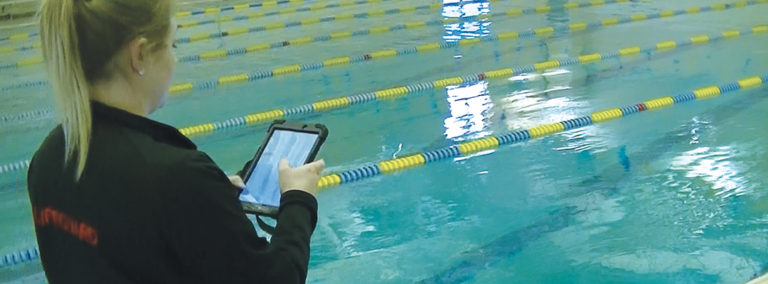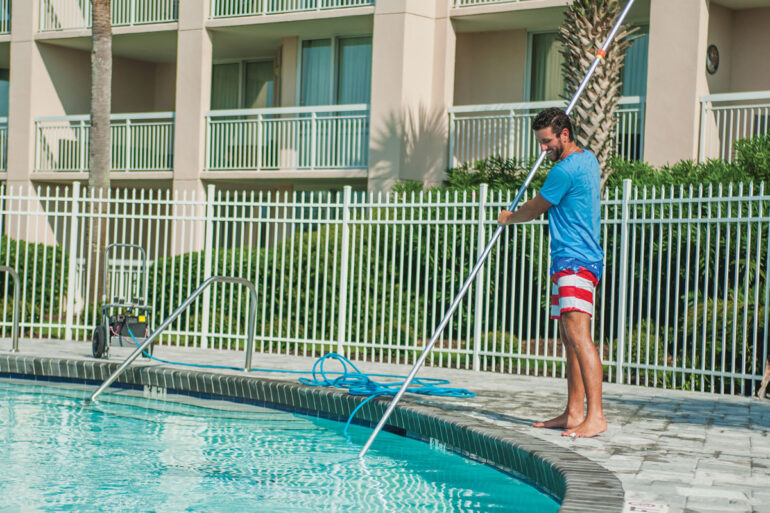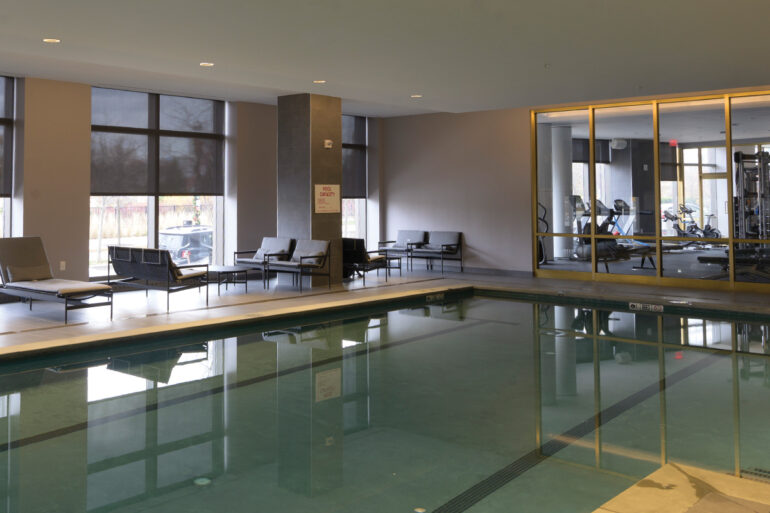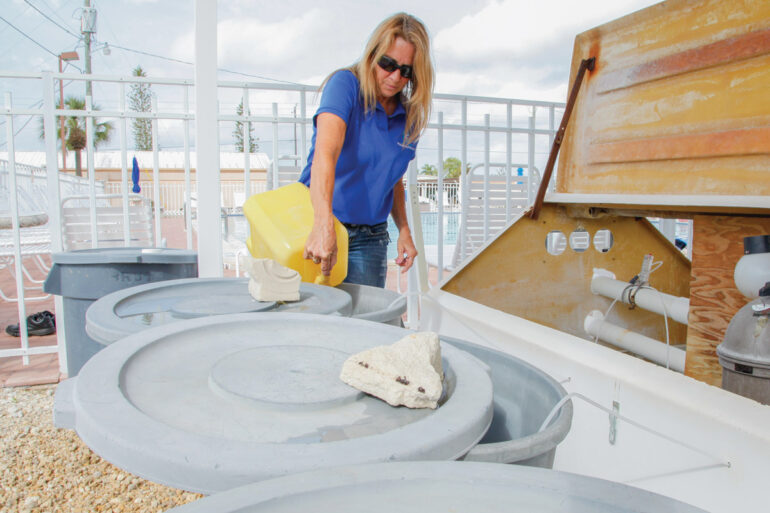End-Capping the Pool Experience
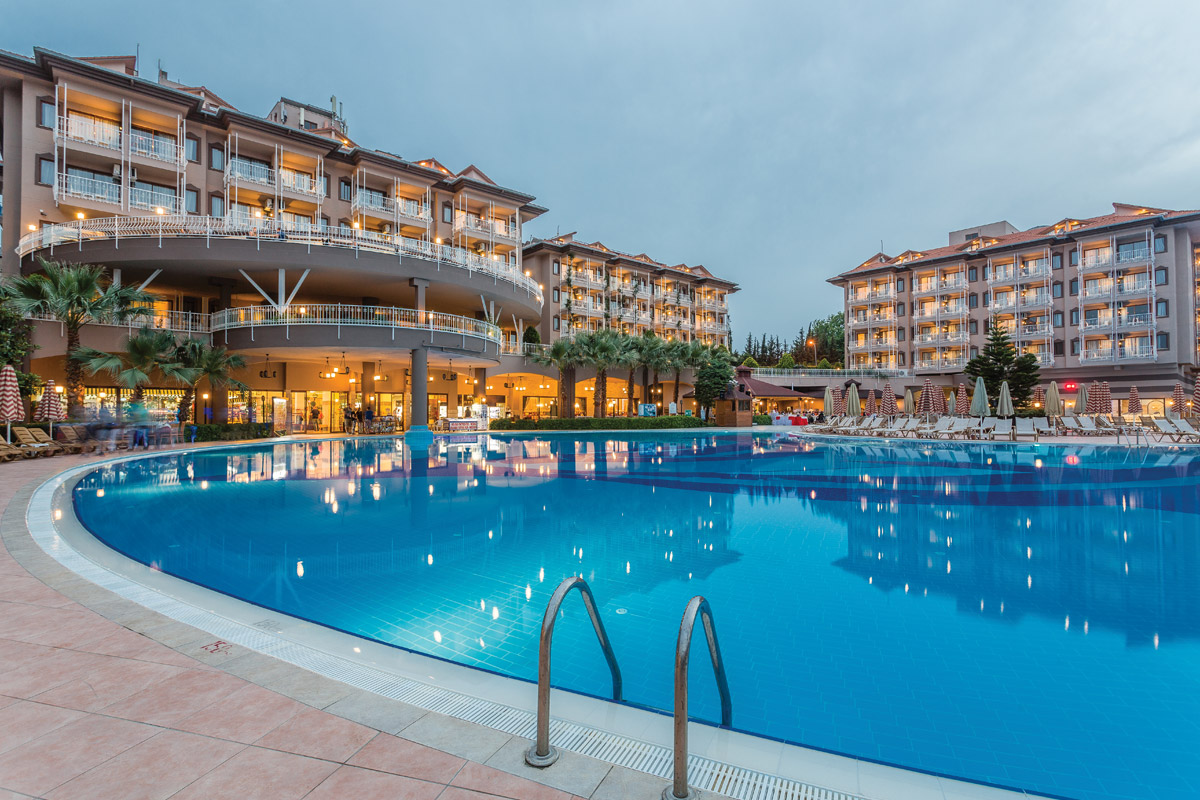
Picture yourself stopping at the grocery on the way home from work. You need bread and milk. You walk into the store and head over to the bakery section. On the shelf, in the place of the usual bread you buy, is a new brand with bright, colorful packaging. Something about the design appeals to you, so you don’t notice it costs $1 more than what you normally pay.
On your way to the dairy case, you pass an aisle end cap with a new flavor of OREO cookie — the kids will love those! You pick up two boxes. You grab the milk and suddenly realize you’re starving after a long day. You head to the snack aisle for something to tide you over until dinner. Finally, you head to the checkout, and they’ve got that chewing gum you haven’t seen since high school! You grab a few packs, a soda for the car and — in less than 10 minutes — you’ve doubled what you planned to spend when you walked in.
Coincidence? Definitely not.
Grocery stores are staged to make shoppers spend more money. Certain brands and products are placed at eye level or in high-traffic areas so the store can increase revenue per square foot. Amusement parks do the same thing: Spend a day at Walt Disney World in Orlando, and your wallet will quickly notice the park is designed to have rides dump you out into gift shops and that pathways lead to food carts.
With all this information, have you ever stopped to think about how much revenue per square foot your commercial aquatic facility brings in? Whether you operate or service a pool in a condo building, hotel, swim school, municipality or otherwise, your commercial aquatic facility brings in a certain amount of revenue as a lead magnet for the rest of the building, and in relation to the specific amenities and services offered.
Identify your bathers, then retail (revenue) opportunities. Who uses a municipal spray park? Young families and grandparents. What sorts of retail items do they need? Disposable water diapers, popsicles and sunscreen.
Who uses a water park with big water slides? Teens and other thrill seekers with disposable income. What sorts of retail items do they need? Paid lockers for their GoPros, merchandise commemorating their visit, food and possibly alcohol.
When I said revenue per square foot of your aquatic facility, you were probably thinking about big-ticket items like a new water slide, larger spa, spray features, underwater speakers or LED lights. And yes, if you have the capital budget, you should regularly upgrade your facility with an eye toward besting your competitors. A hotel with WATERSLIDE on the side of the building is an easy lead magnet for a tired family driving down the highway over other hotels that might be closer, cheaper or cleaner.
Due to the pandemic decreasing facility revenue, commercial pool operators may fail to realize the opportunities that arise from increasing the time and money bathers spend in a facility. Minor upgrades to a space’s function and appearance can be made at a nominal cost to increase bather comfort, extend the average length of stay and build higher rates of return. Think about it like re-painting the inside of your home right before listing it for sale.
At one commercial aquatic facility, we consistently had problems with parents dropping off kids to swim and disappearing for hours. The kids ran amok without supervision, and we had vandalism in the changerooms. While trying to figure out why this was happening, parents told me there was no seating and terrible Wi-Fi in the pool area, so they’d sit in their vehicles — and then end up leaving the property to run errands.
We spent less than $2,000 to add a free high-speed Wi-Fi hot spot and purchased new furniture to create a comfortable seating area. We added a children’s play area with puzzles and toys, and coffee and vending machines. Soon, we had parents booking PTA meetings in the pool waiting area because it had become such a popular third space in the community. In solving a usage problem, we quickly built steady retail revenue and improved facility usage (drop-in revenue) because families came to prefer our pool over others.
If you look closely and talk to customers, there are pain points that keep them from using an aquatic facility more often. Small, simple changes from offering towel rental service to coin-operated lockers or birthday party packages will boost facility usage. After six to 12 months of increased facility usage, you have a better position from which to negotiate capital improvements.
Think about your local pool store that sells grills or a pool builder who installs fire pits. It’s not in spite of their focus on swimming pools that they sell these items — it’s because of it. Commercial swimming pools are no different, and it’s time we stop thinking that simply having a pool is enough to draw people into facilities. Customers have more choices than ever about how and where to spend money. They look at facility reviews and photos online before ever stepping foot inside. Swimming pool operators and commercial service technicians must think about the overall value a facility brings to customers. That, in turn, directs how much revenue the facility brings in, and how much operators can charge. This type of thinking makes you and/or your company invaluable to the facilities you serve and service.

